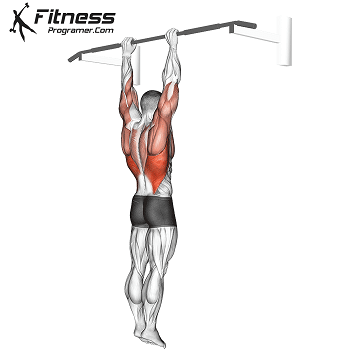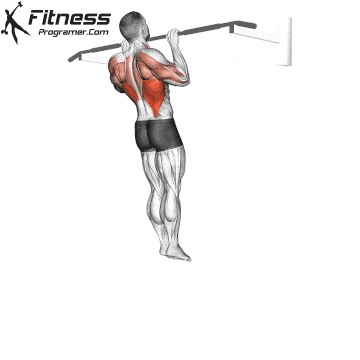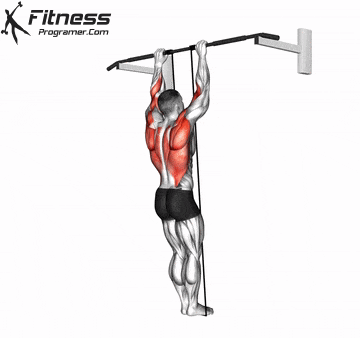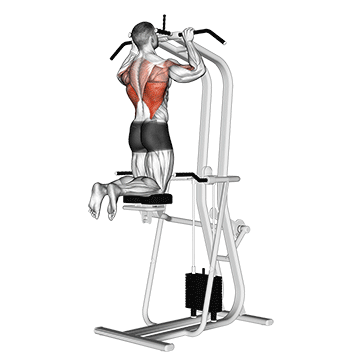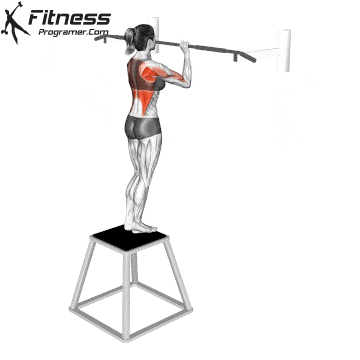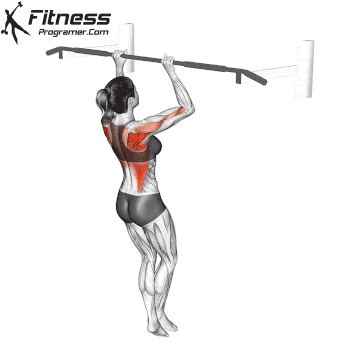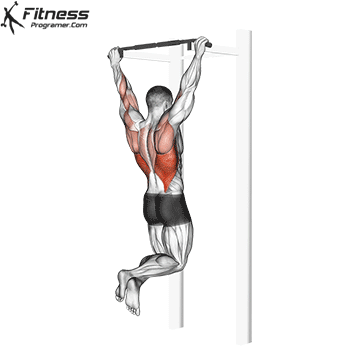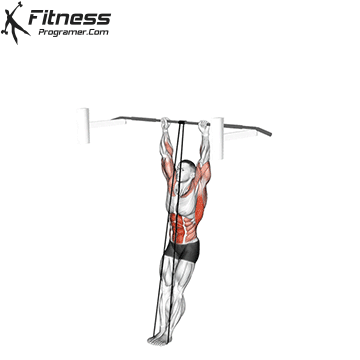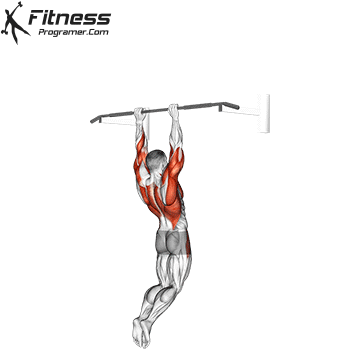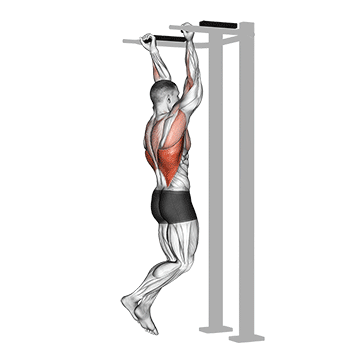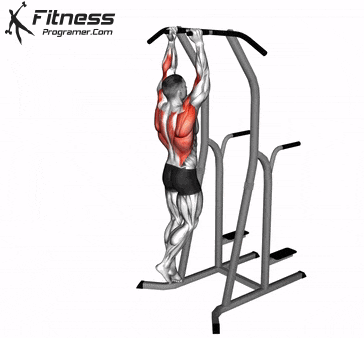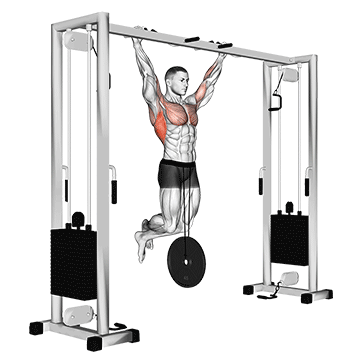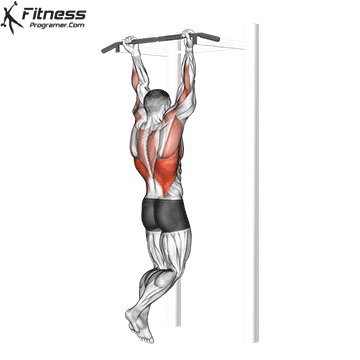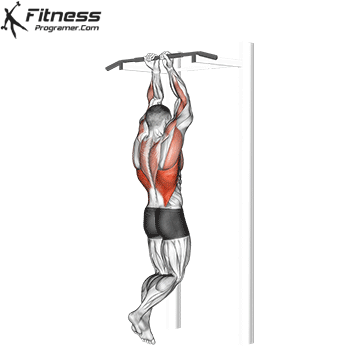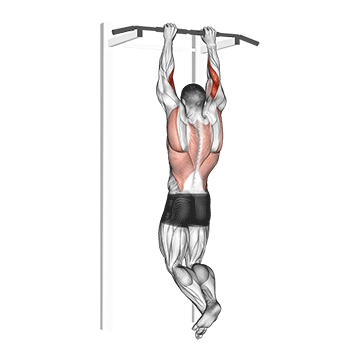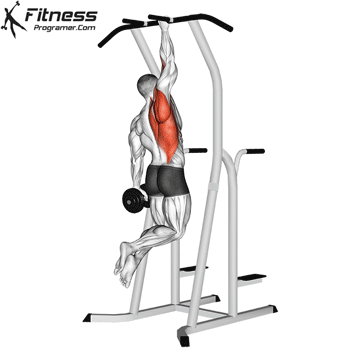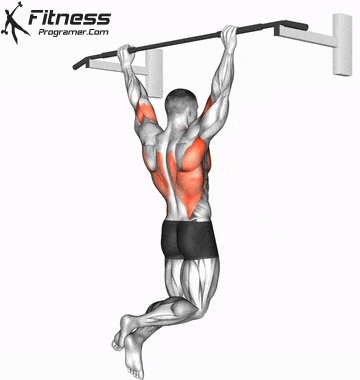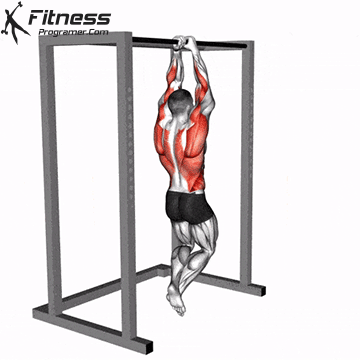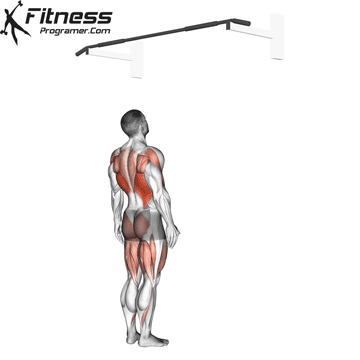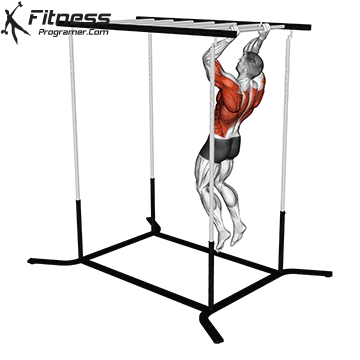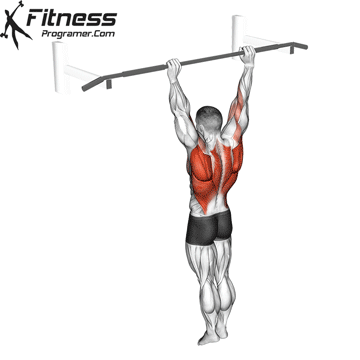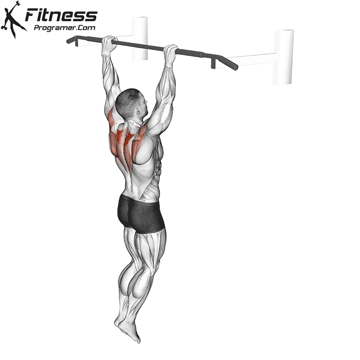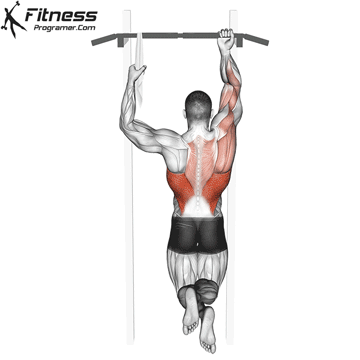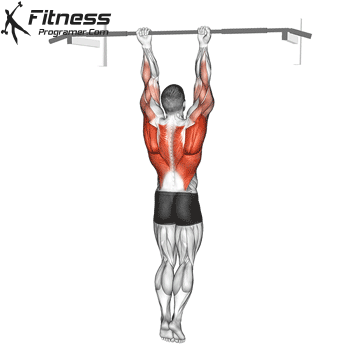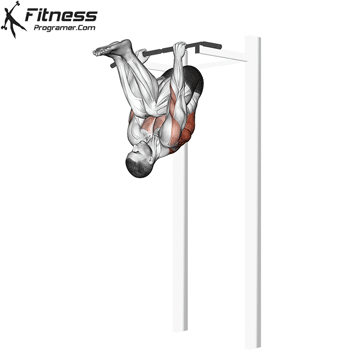Overview
The weighted muscle-up is a progression of the standard muscle-up, performed by adding external resistance such as a dip belt, weighted vest, or plate-loaded backpack. It targets both vertical pulling and pushing muscles in a single dynamic repetition. It demands power, coordination, and technique, making it a staple in advanced calisthenics and functional strength routines.
How to perform Weighted Muscle-Up
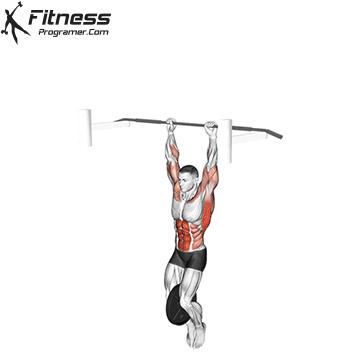
Attach weights securely to a dip belt, vest, or backpack. Use moderate weight to begin.
Grip the bar slightly wider than shoulder-width, with a false grip or standard overhand grip.
Initiate a powerful pull-up, driving your elbows down and back aggressively.
Explosively transition over the bar, pulling your chest high and shifting the wrists on top.
Press your body up, finishing in a locked-out dip position above the bar.
Lower yourself under control and repeat for desired reps or hold the top position for stability work.
Tips for Proper Form
Use a false grip if needed to ease the transition over the bar.
Keep the core tight and avoid swinging during the pull.
Pull high and fast, aiming to get your upper chest above the bar quickly.
Drive the elbows back, not just up, to guide the transition.
Maintain control during the descent to protect shoulders and elbows.
Common Mistakes
Using too much weight too early, which compromises form.
Excessive kipping or swinging, reducing strength gains.
Pulling too low, which makes the transition nearly impossible.
Not training the transition separately, causing stalls mid-rep.
Ignoring mobility, especially in the shoulders and wrists.
Benefits of the Weighted Muscle-Up
Increases Explosive Pulling Power: Trains fast-twitch fibers and advanced strength in the lats and biceps.
Builds Total Upper Body Strength: Engages pulling and pushing muscles in a compound, full-range movement.
Enhances Control and Coordination: Requires precise timing and technique to manage body and weight.
Improves Core Engagement: Demands strong core control to stabilize during explosive and overhead phases.
Strengthens Transition Muscles: Focuses on the unique strength required to shift from pull to press.
Progresses Bodyweight Training: Adds overload for continued adaptation once bodyweight muscle-ups are mastered.
Supports Skill-Based Fitness Goals: Useful for athletes, gymnasts, and calisthenics practitioners aiming for elite skill execution.
How to Incorporate Into Your Routine
- For Strength Training: Perform 3–5 sets of 2–4 reps with a challenging weight, focusing on quality over quantity.
- For Power Development: Pair with explosive pull-up drills or dips in contrast sets for velocity training.
- For Calisthenics Progressions: Add once you can consistently do 5–8 clean bodyweight muscle-ups.
- For Functional Training: Include in high-tension circuits with gymnastic rings, rope climbs, or plyometric dips.
- For General Fitness: Use variations like assisted weighted muscle-ups with bands or low reps for advanced skill development.
- For Sport Performance: Use sparingly in peaking phases to improve pulling explosiveness and shoulder integration.
Weighted Muscle-Up: Muscles Worked
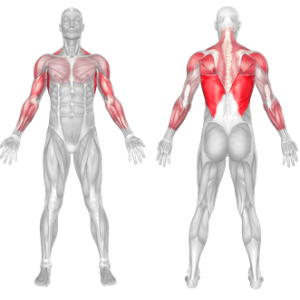
Weighted Muscle-Up Variations
Frequently Asked Questions
When should I start doing weighted muscle-ups?
Only after you can consistently perform strict bodyweight muscle-ups with control and clean form.
What equipment do I need?
A dip belt, weighted vest, or sturdy backpack filled with plates or dumbbells.
Are weighted muscle-ups bad for your shoulders?
Not if performed with proper form, mobility, and gradual loading. Always warm up and progress smartly.
Can I use kipping to assist?
Some momentum is acceptable in training, but avoid excessive kipping to ensure strength gains.
What alternatives build the same strength?
Weighted pull-ups, explosive chest-to-bar pull-ups, and bar dips are excellent supporting exercises.

